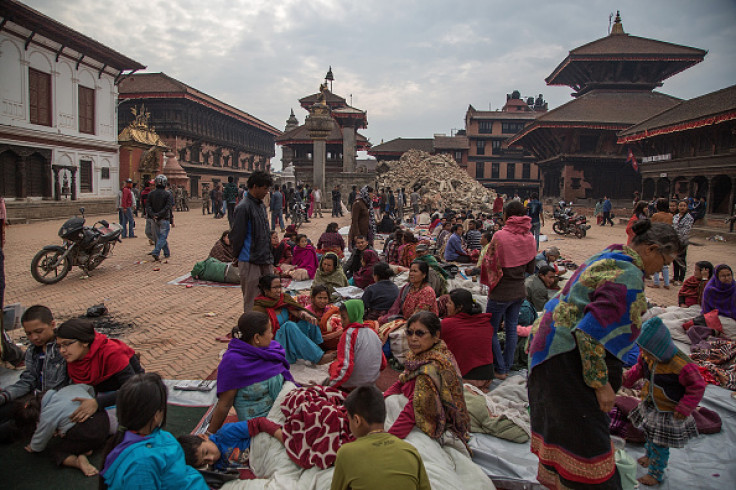Nepal Earthquake: Fear of aftershocks draws victims to hospital car parks

As fresh aftershocks hit Nepal on Sunday 26 April, doctors were forced to treat the injured in makeshift operating theatres in car parks.
The whole time I was thinking if the building next to me was going to come down on top of me. People here are in a panic, and every aftershock contributes to that. They are not going indoors, they are staying in the roads and in open areas. Many are searching for family members.
Medics from the Himalayan nation are battling with the mounting death toll from the monster quake, that is now exceeding 2,500 with over 6,000 reported injured since the 7.8 magnitude quake hit Nepal.
The aftershocks left several patients fearing going inside medical facilities to seek treatment, leaving medics with no option but to treat the injured in car parks.
"We have treated many people since yesterday [25 April], the majority children. Most patients have head injuries or fractures. Two of our patients died, two are critical," said Samir Acharya, a doctor at Annapurna Neurological Hospital, reported AFP News.
Acharya said medics were working out of a tent set up in a car park as hospitals are also reaching their capacity.
"Electricity has been cut off, communication systems are congested and hospital are crowded and are running out of room for storing dead bodies," Helen Szoke, Oxfam Australia chief executive told AFP News.
Deadliest Everest disaster
In what is being termed as the deadliest disaster to hit Mount Everest, fresh aftershocks triggered more avalanches hampering the on-going rescue efforts at the mountain base camp.
"People being stretchered out as choppers land -- half a dozen this morning. Weather clear, some snowfall," AFP's Nepal bureau chief Ammu Kannampilly reported from the base camp.
Streets across Kathmandu were reportedly impassable as government endorsed the city's residents, estimated at 1.2mn, to take shelter outside.
Residents took to school playgrounds and government offices in fears of continued aftershocks.
"The whole time I was thinking if the building next to me was going to come down on top of me," said Stephen Groves, a resident of Kathmandu, reported The New York Times.
"People here are in a panic, and every aftershock contributes to that. They are not going indoors, they are staying in the roads and in open areas. Many are searching for family members."
According to Groves, rumours around the city suggest the worst aftershocks are still to come.
© Copyright IBTimes 2024. All rights reserved.






